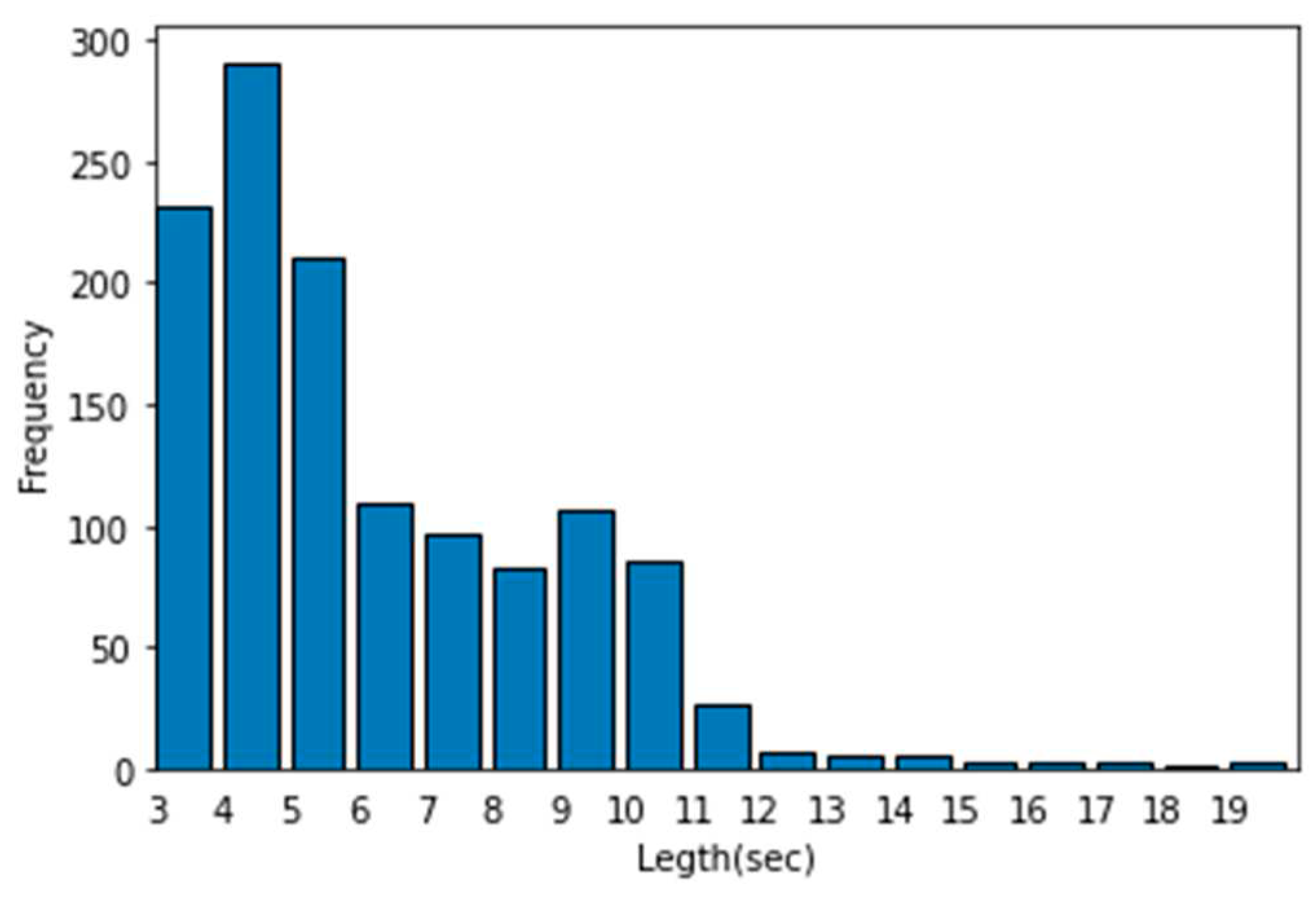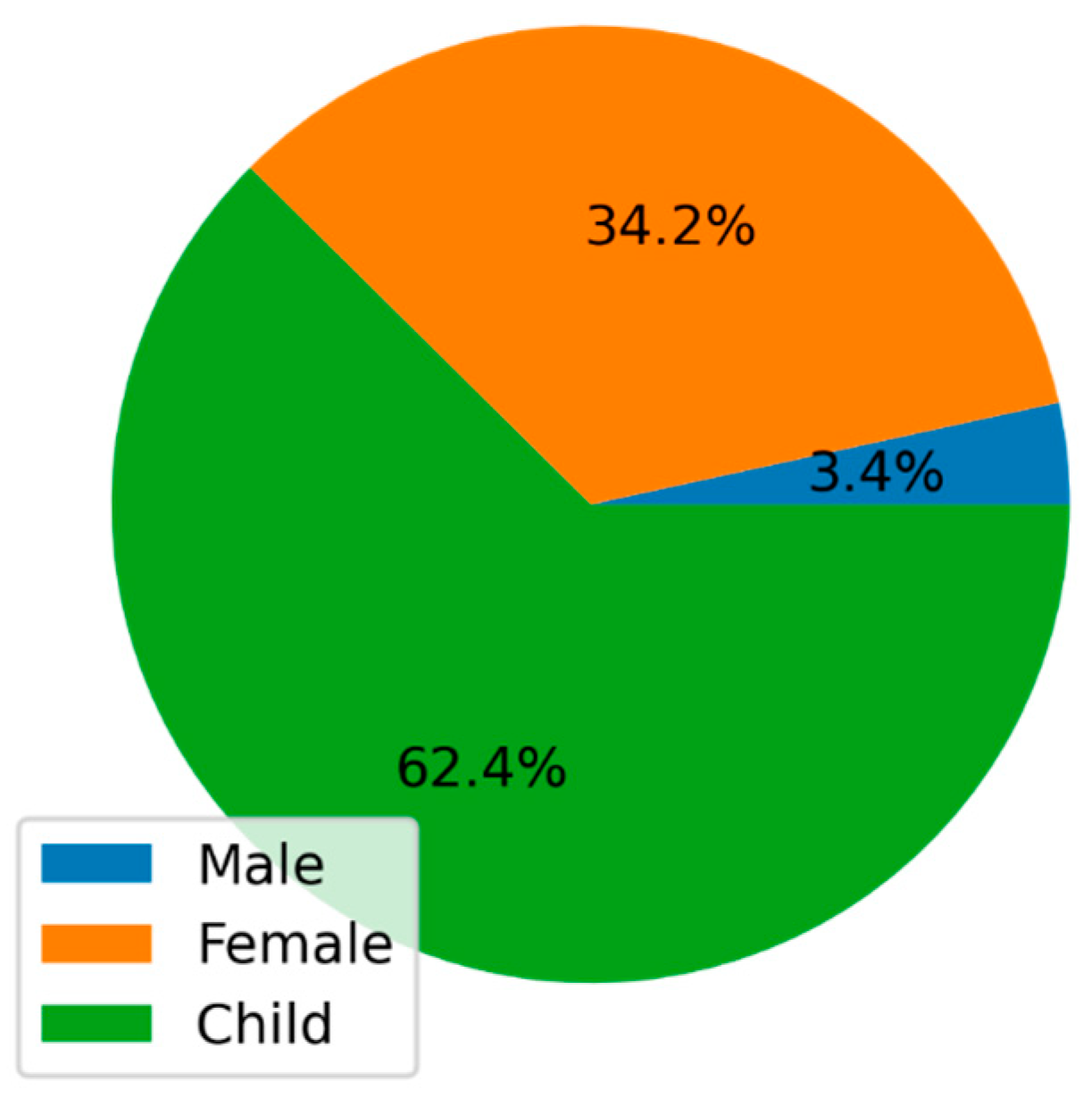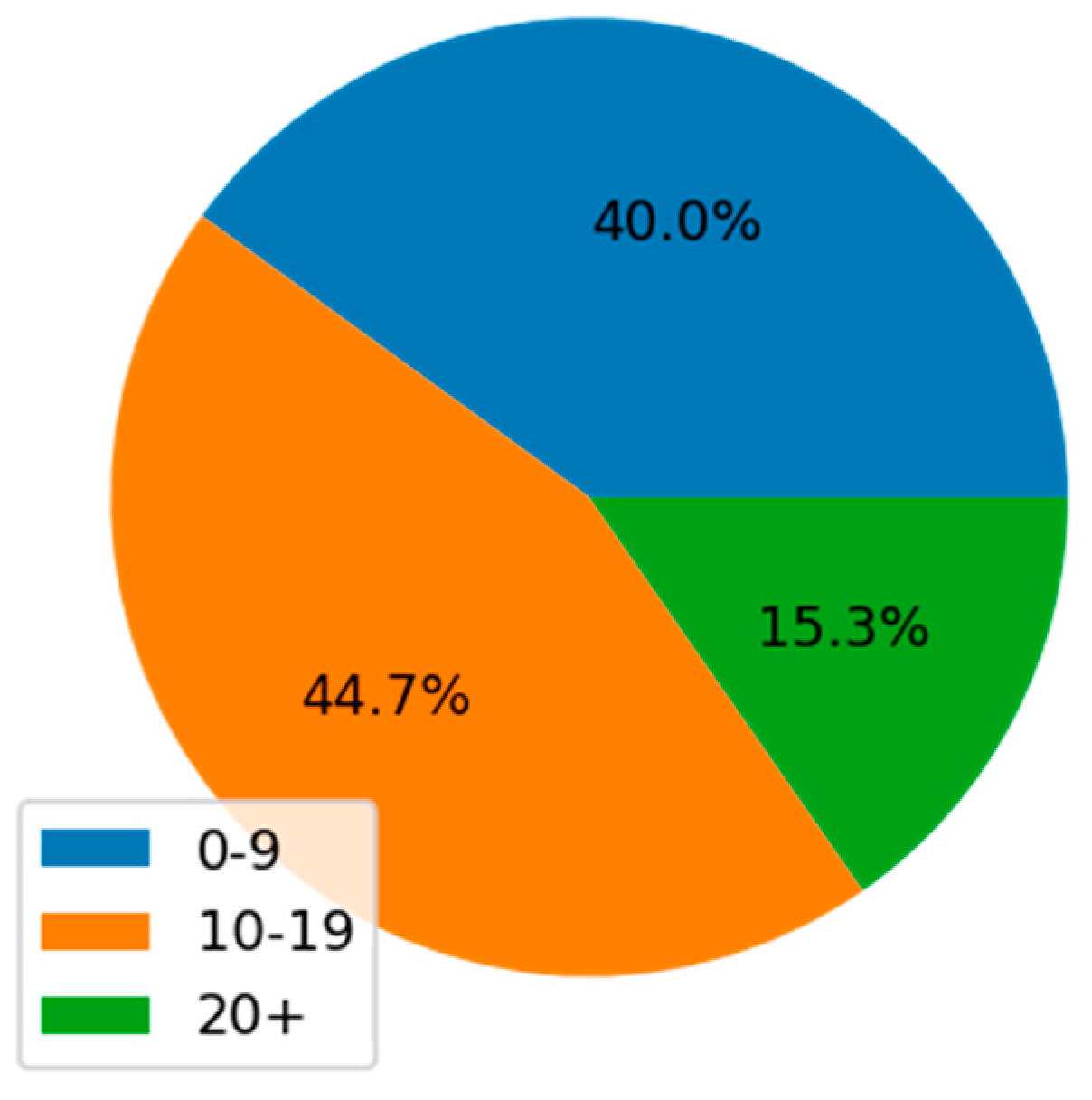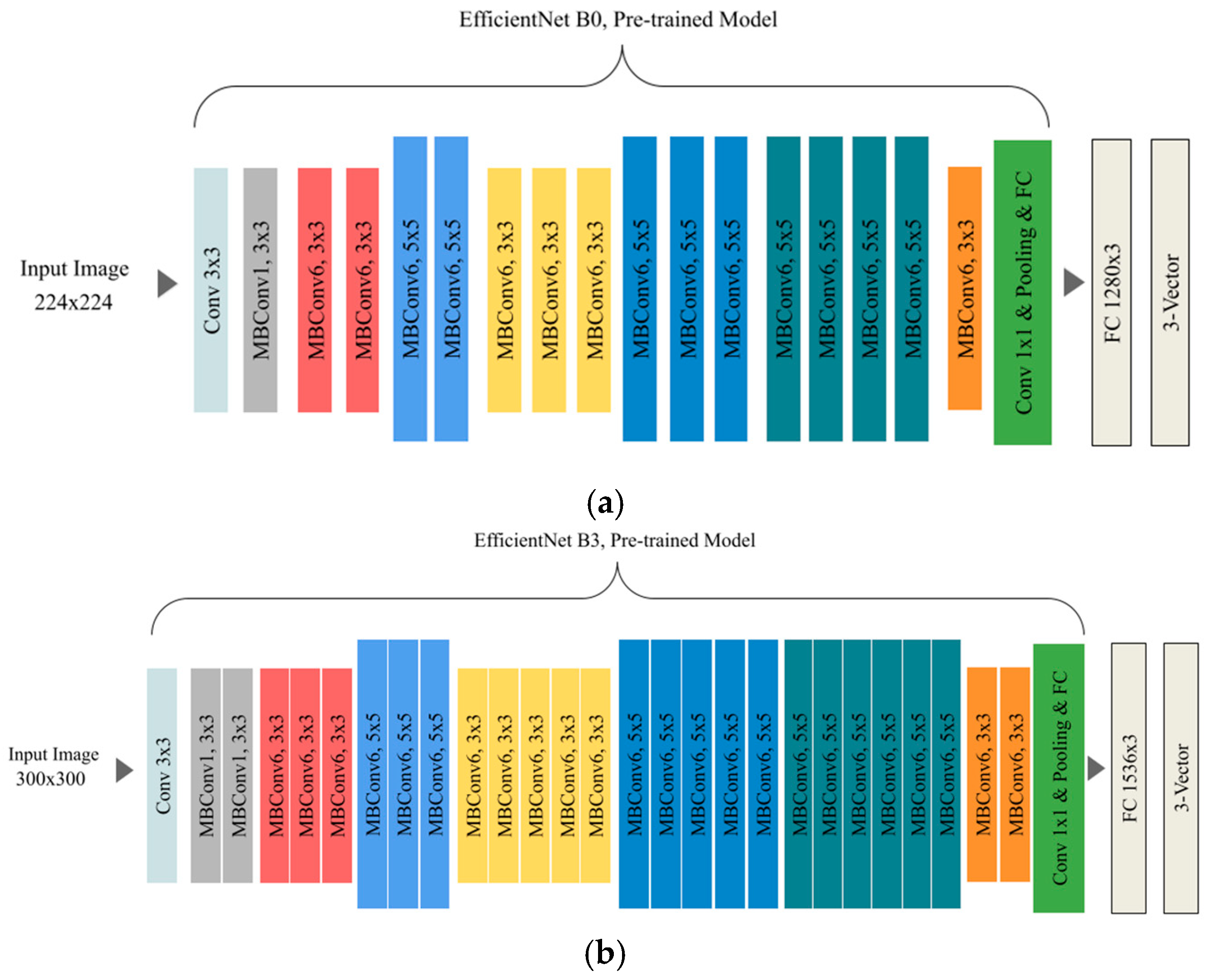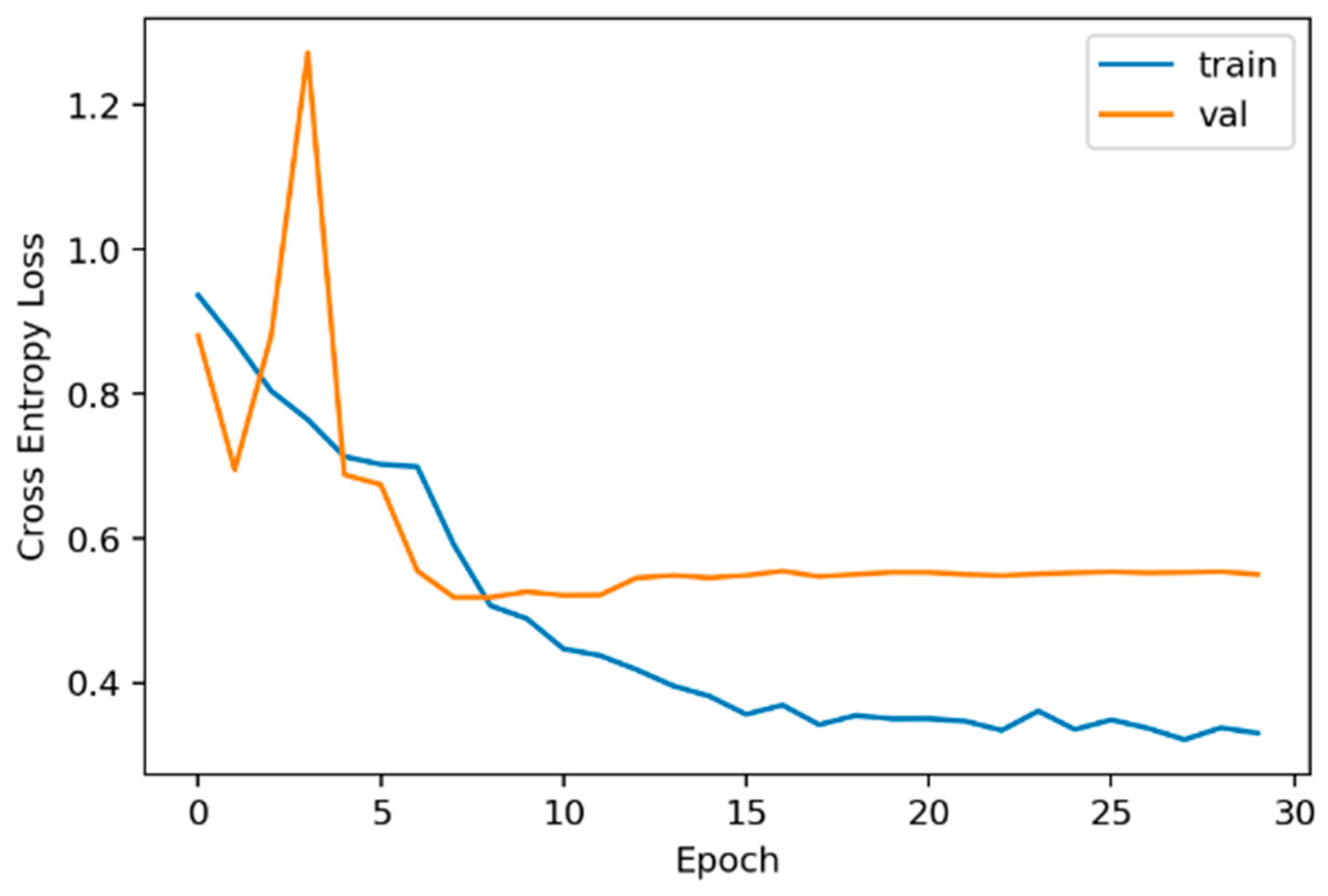1. Summary
Demand for digital media continues to increase worldwide with the advancement of information technology. Especially, the size of the digital animation market is growing remarkably. Characters are one of the most important elements in composing digital animation. The appearance and voice of a character should be designed to encompass the characteristics of the character so that the audience can quickly grasp the personality and values of the character. Appearance and voice of a well-designed character can help viewers understand the characteristics of the character [
1]. Specifically, matching the appearance and voice of a character is important. If the appearance and voice of characters are inconsistent, it will lower the interest of the viewers in the animation. However, it is not easy for animation producers to find a voice that matches the character of the animation. Looking for voice actors that match the character is a time-consuming task. Recently, owing to the rapid development of deep learning technology, a technology for generating a human face using a voice [
2,
3] or, on the contrary, using a face is being studied [
4]. Furthermore, a dataset for this study has been established [
2]. However, there is no dataset consisting of the appearance and voice of an anime character.
Therefore, in this study, we aim to construct and verify a Korean audio-visual dataset of characters. However, data collection is not easy because of the exaggerated nature of the character's face and the limited number of animations. Therefore, in this study, we have two research questions: how can we effectively build a dataset, and what information can we additionally supply to the audio-visual dataset of characters for various experiments and verification?
This study is conducted as an extension of basic research for the Korean audio-visual dataset of characters [
5]. We collected 3D animation videos uploaded to YouTube. For a more convenient collection, we found a channel that only uploaded animations and crawled all animations in that channel. Then, to effectively collect data, we build a Mediapipe-based application to extract frontal facial images and voices from the collected videos [
6]. Furthermore, additional information, such as gender and age, was added to the character to support various experiments. Through this, a high-quality dataset consisting of a total of 1,522 frontal face images and a total of 7,999 seconds of audio clips was finally built. The dataset of this study is expected to be used to apply artificial intelligence in various animation-related industries.
2. Data Description
This dataset consists of 490 animation characters, and each character consists of 1–3 audio clips of at least 3 s and 1–5 images. The total number of audio clips is 1,317 and total time is 7,999 s. The total number of images of the front face of the character is 1,522.
Table 1 lists the specifications of our audio-visual dataset.
The length of the audio clips in the dataset varies from 3–19s. In other words, as shown in
Figure 1, the minimum length of audio clips is 3s, and the maximum length is 19s. Generally, 4s is considered as a high percentage.
The gender group consisted of males, females, and children with 3.4, 34.2, and 62.4%, respectively(
Figure 2), and the age groups are divided into 0–9, 10–19, and over 20, and the proportions are 40, 44.7, and 15.3%, respectively(
Figure 3). In this dataset, there is a bias in the number of characters according to gender and age group. This was because of the lack of 3D animations dubbed in Korean that were uploaded to YouTube. It is determined that additional data collection using movie streaming sites other than YouTube is necessary.
3. Methods
3.1. Data Collection
To construct this dataset, 3d animations uploaded on YouTube were first collected. Channels that upload only animation were collected, and all videos of the channel were crawled to minimize manual work. 2D characters have limitations in using them as training data because exaggerated features appear differently for each animation. Therefore, only 3D characters were used. A contour-detection processing technique was used to automatically distinguish 2D and 3D animation from the collected videos. 3D images have unclear and soft borders owing to contrast, whereas 2D character borders were clear and only areas where the values around pixels change abruptly were detected, resulting in a high black-and-white ratio. Therefore, among the various kernels, the Scharr filter, which expresses the boundary of the 3D image most indistinctly and smoothly [
7], was used. A threshold value was set through the ratio of color to black and white, and the videos were classified as 2D if this value exceeded and 3D if not.
After obtaining only the videos featuring the 3D character, the face image and voice of the character were extracted based on the application developed using Mediapipe Face Detection. Face Detection is a high-performance face recognition AP I that recognizes faces through six landmarks [
8]. First, the section where the character's face appears is extracted using face detection. Then, based on the extracted section, the screen of the section is captured and saved, and the audio is saved in the wav file format [
9].
The following rules were applied to obtain a section in which a face appears. First, images that are too far from the screen are not saved because they are of poor quality. For this, we set the model index of MODEL_SELECTION, a property of face detection, to 0 so that the small face in a distance is not recognized. The model index can be set from 0 to 1 and is suitable for recognizing a person within 2 m and a person within 5 m from the monitor, respectively. Images that are too far from the screen will not be of good quality. Second, when several people appear on one screen, the face of the largest character on the screen is captured. In general, when several people appear on one screen, the fact that the speaker usually appears large on the screen was applied. Third, as an animal with a human facial structure is also recognized as a human, only images with a probability of 80% or more of being a face are considered. Fourth, the section with a video playback time of less than 2 s is deleted. This is because the section where the character appears for less than 2 s is usually a scene showing facial expressions without exclamations or lines; therefore, it is not suitable for use as a training data. Using these rules, we were able to effectively extract face images and voices.
3.2. Data Preprocessing
The images of the character were saved one by one every 0.5 seconds, and only the most frontal and expressionless images were extracted for ease of learning. For the rotated image of the expressionless face, the degree of rotation centered on both eyes was first obtained, rotated so that it was parallel, and then the face was cut and stored. Furthermore, to facilitate learning, we increased the quality of data by deleting unnecessary images as follows: characters with more than half-closed eyes, non-frontal characters, characters wearing glasses, and characters with a beard. In animation, background music (BGM) frequently appears in addition to the voice of the character. Therefore, BGM or sound effects are removed through noise cancellation (
Figure 4). Additionally, using an open-source voice detection (VAD) algorithm, the silent section of the audio was removed [
10,
11].
3.3. Additional Information of Characters
For various experiments, verification, and ease of learning, that is, to build a high-quality dataset, we labeled each character with gender and age. Gender and age classification were automatically labeled using Naver Clova Face Recognition and an open API, and unrecognized images were removed [
12]. For face images that are too young to be classified as gender, the API outputs ‘children’ instead of gender. Because the age predictions of the API are provided in the form of ranges, we used the median of each prediction range to label age groups. Therefore, our dataset was categorized and labeled into gender groups and age groups.
4. Verification
To verify the validity of the dataset built in this study, we present the results of using character images as training data for gender and age classification. For this, EfficientNet was used for transfer learning. EfficientNet has high accuracy in image classification and high-learning efficiency in transferfor gender and age classification. For this, EfficientNet was used for transfer learning. EfficientNet has high accuracy in image classification and high-learning efficiency in transfer learning [
13]. Fine-tuning was performed using two variations: EfficientNet-B0 and EfficientNet-B3. The structures of EfficientNet-B0 and EfficientNet-B3 are listed in
Table 2 and
Table 3, respectively.
To use the dataset constructed in this study as training data, each image was resized to 224 x 224 and 300 x 300 according to the structure of EfficientNet-B0 and EfficientNet-B3, respectively [
13]. In addition, FC layers for age and gender classification were added to the last FC layer of each model. Xavier initialization was used for adding FC layers [
14,
15].
Figure 5 shows the size of the added FC layer.
The two deep learning models showed 78.4% and 81% accuracy in gender classification and 81.6% and 80.3% accuracy in age classification, respectively (
Table 4).
Figure 6 shows the change in loss according to epoch. From 30 epochs onwards, no further learning has progressed. This is because of the lack of data.
5. Conclusion
The aim of this study was to construct and verify a Korean audio-visual dataset of characters in 3D animation. To do this, we first crawled the animation data uploaded to YouTube. Then using MediaPipe, we developed an application for extracting the frontal face images and voices of the character. Utilizing this application, we were able to effectively build a high-quality dataset.
The dataset built in this study comprises 490 characters, the total number of audio clips is 1,317, and the total number of face images of characters is 1,522. Each character consisted of an average of 16.3 s of voice clips and an average of three or more face images. Moreover, each character is labeled with gender and age automatically for verifying this dataset. The two deep learning models built with transfer learning for dataset validation showed an accuracy of up to 81% in gender classification and 81.6% in age classification. The loss of accuracy is owing to the lack of data.
Additional data will be collected in future studies. Furthermore, we will utilize this dataset to build a model that can generate a character by inputting a voice clip and a model that generates a voice by inputting a character. We also plan to release this dataset for free use by researchers and students. The dataset built in this study is expected to be used to apply artificial intelligence in various animation-related industries.
Author Contributions
Conceptualization and methodology, J.W.P.; software, S.H. and Y.S.; validation, Y.S.; writing—original draft preparation, S.H. and Y.S.; writing—review and editing, J.W.P.; supervision, J.W.P. All authors have read and agreed to the published version of the manuscript.
Institutional Review Board Statement
Not applicable.
Informed Consent Statement
Not applicable.
Conflicts of Interest
The authors declare no conflict of interest.
References
- Hahm, S. Convergence Research on the Speaker's voice Perceived by Listener, and Suggestions for Future Research Application. IJASC 2022, 11, 55–63. [Google Scholar]
- Oh, T. H.; Dekel, T.; Kim, C.; Mosseri, I.; Freeman, W. T.; Rubinstein, M.; Matusik, W. Speech2face: Learning the Face behind a Voice. In Proceedings of the IEEE/CVF Conference on Computer Vision and Pattern Recognition, California, USA, 16 June 2019; pp. 7539–7548. [Google Scholar]
- Wen, Y.; Raj, B.; Singh, R. Face Reconstruction from Voice Using Generative Adversarial Networks. NeurIPS 2019, 32. [Google Scholar]
- Lu, H. H.; Weng, S. E.; Yen, Y. F.; Shuai, H. H.; Cheng, W. H. Face-based Voice Conversion: Learning the Voice behind a Face. In Proceedings of the 29th ACM International Conference on Multimedia, Chengdu, China, 20-24 October 2021; pp. 496–505. [Google Scholar]
- Hyun, S.; Son, Y.; Park, J. W. Building a Korean Audio-Visual Dataset of Characters in 3D Animation. In Proceedings of the 10th O2O International Symposium on Advanced and Applied Convergence, Seongnam, Korea, 17-19 November 2022; pp. 121–126. [Google Scholar]
- MediaPipe. https://mediapipe.dev/ 25 September 2023.
- Ciresan, D. C.; Meier, U.; Masci, J.; Gambardella, L. M.; Schmidhuber, J. Flexible, High Performance Convolutional Neural Networks for Image Classification. In Proceedings of Twenty-second International Joint Conference on Artificial Intelligence, Barcelona Catalonia, Spain, 16-22 July 2011. [Google Scholar]
- Perisic, H.; Strömqvist, T. PhysiKart: A 2D Racing Game Controlled by Physical Activity through Face-tracking Software, degree of Bachelor, Linköping University, Sweden, 2022.
- Nam, K. A Study on Processing of Speech Recognition Korean Words. JCCT 2019, 5, 407–412. [Google Scholar]
- Python Interface to the WebRTC Voice Activity Detector. https://github.com/wiseman/py-webrtcvad/ 25 September 2023.
- An, S. J.; Choi, S. H. Voice Activity Detection Based on SNR and Non-Intrusive Speech Intelligibility Estimation. IJIBC 2019, 11, 26–30. [Google Scholar]
- Open API to the Naver CFR. https://developers.naver.com/products/clova/face/ 25 September 2023.
- Tan, M.; Le, Q. Efficientnet: Rethinking Model Scaling for Convolutional Neural Networks. In Proceedings of the 36th International Conference on Machine Learning, PMLR, California, USA, 9-15 June 2019; pp. 6105–6114. [Google Scholar]
- Glorot, X.; Bengio, Y. Understanding the Difficulty of Training Deep Feedforward Neural Networks. In Proceedings of the Thirteenth International Conference on artificial intelligence and statistics, PMLR, Sardinia, Italy, 13-15 May 2010; pp. 249–256. [Google Scholar]
- Kang, M. J.; Kim, H. C. Comparison of Weight Initialization Techniques for Deep Neural Networks. IJACT 2019, 7, 283–288. [Google Scholar]
|
Disclaimer/Publisher’s Note: The statements, opinions and data contained in all publications are solely those of the individual author(s) and contributor(s) and not of MDPI and/or the editor(s). MDPI and/or the editor(s) disclaim responsibility for any injury to people or property resulting from any ideas, methods, instructions or products referred to in the content. |
© 2023 by the authors. Licensee MDPI, Basel, Switzerland. This article is an open access article distributed under the terms and conditions of the Creative Commons Attribution (CC BY) license (http://creativecommons.org/licenses/by/4.0/).
